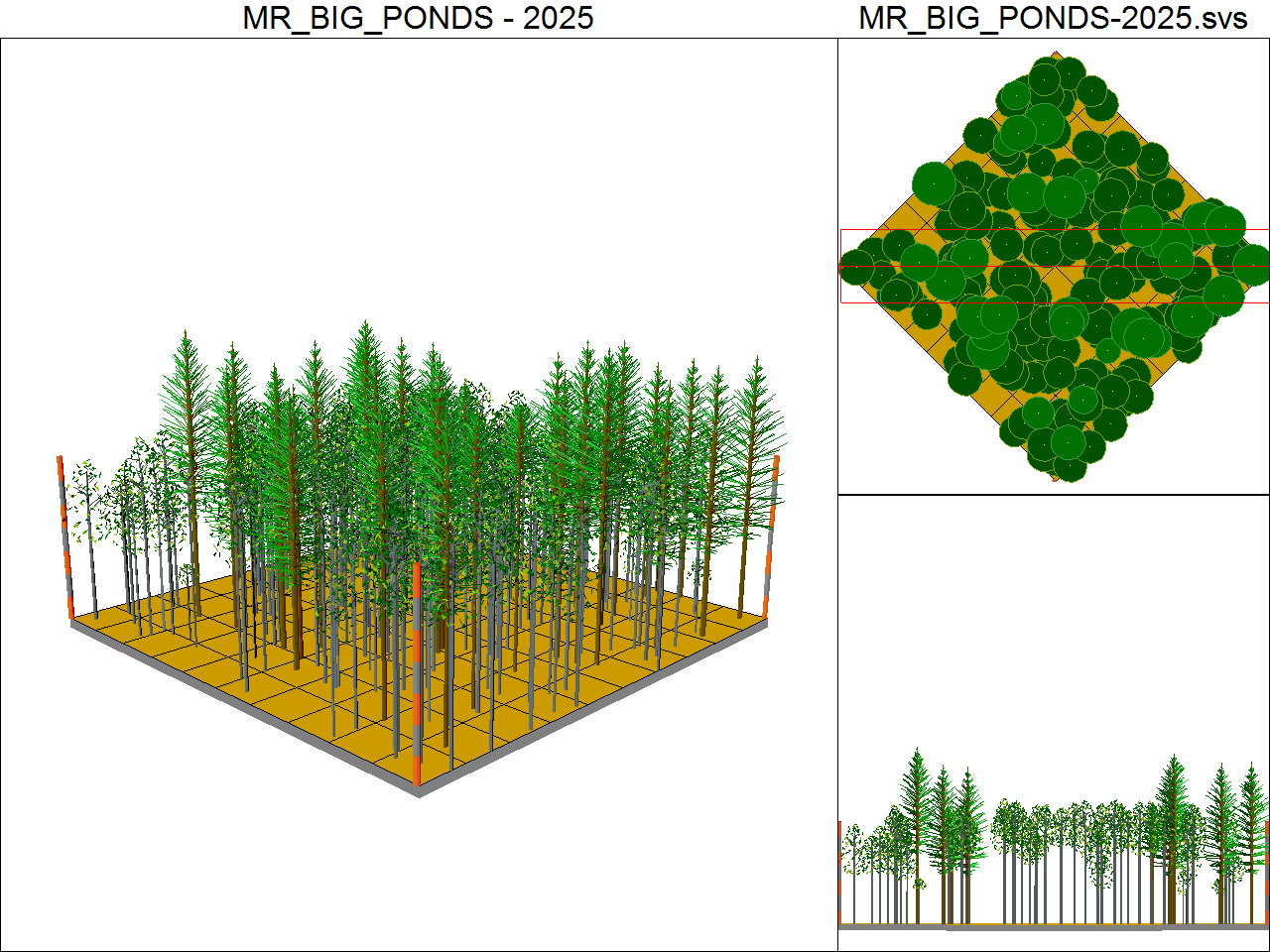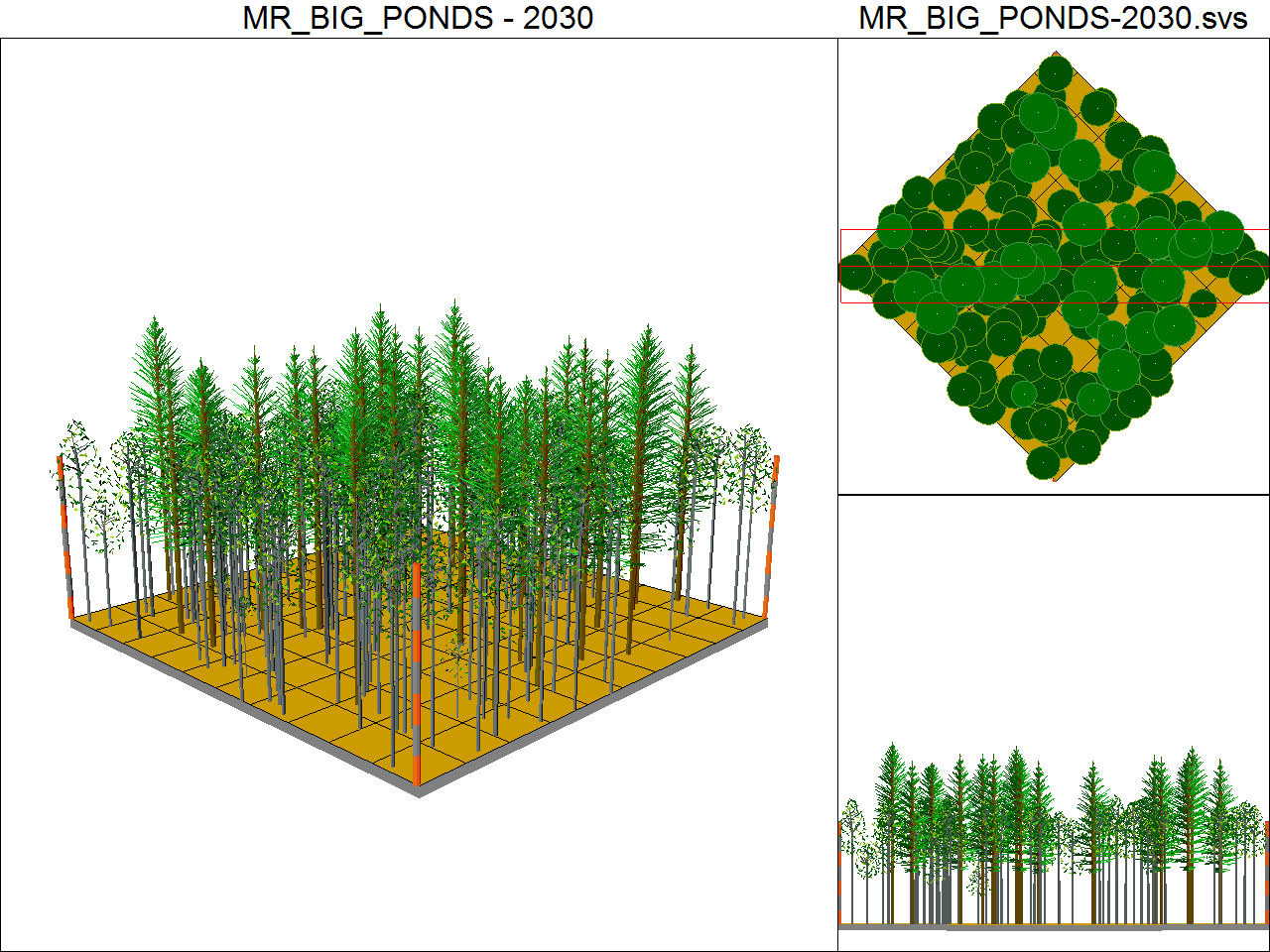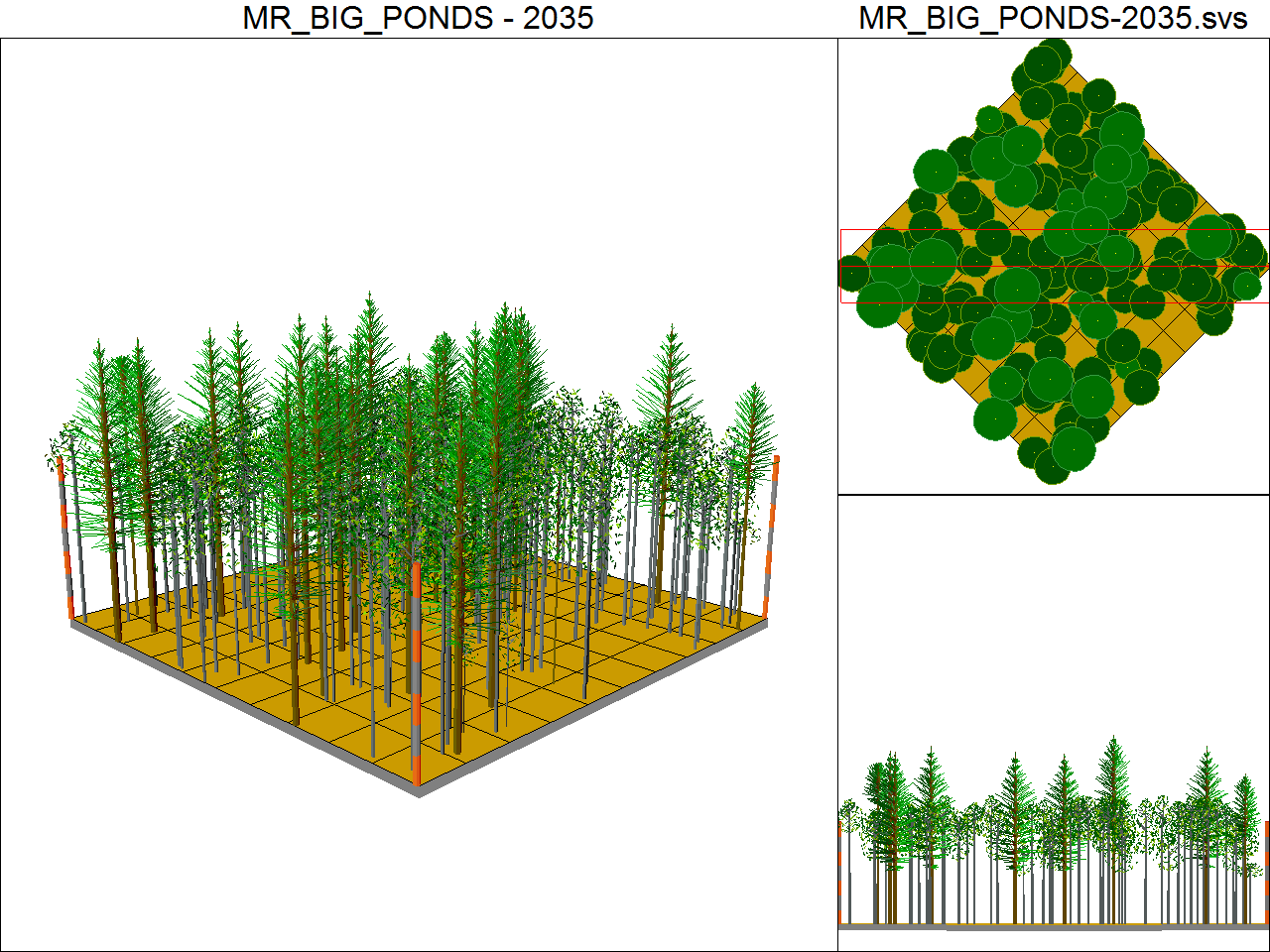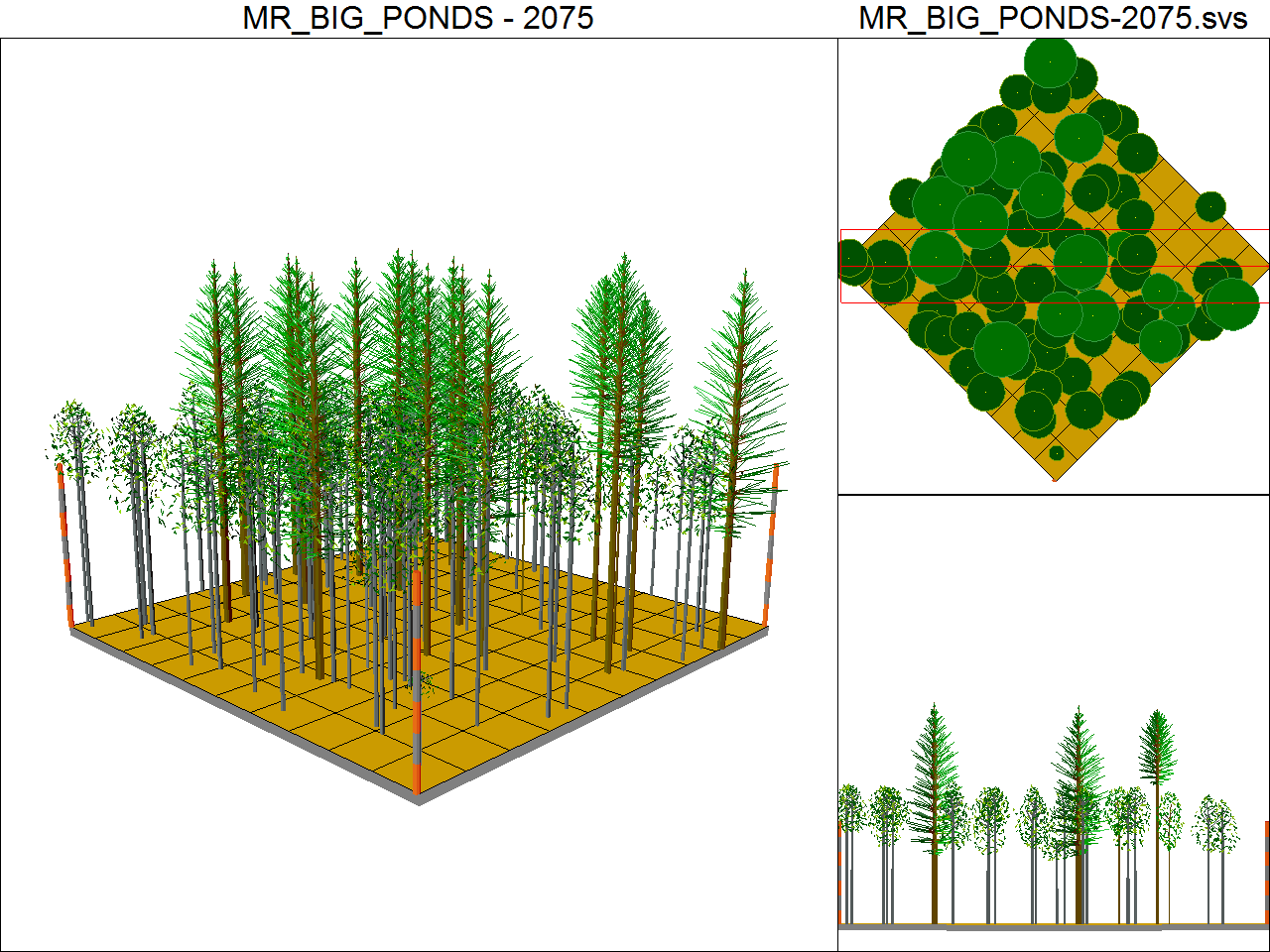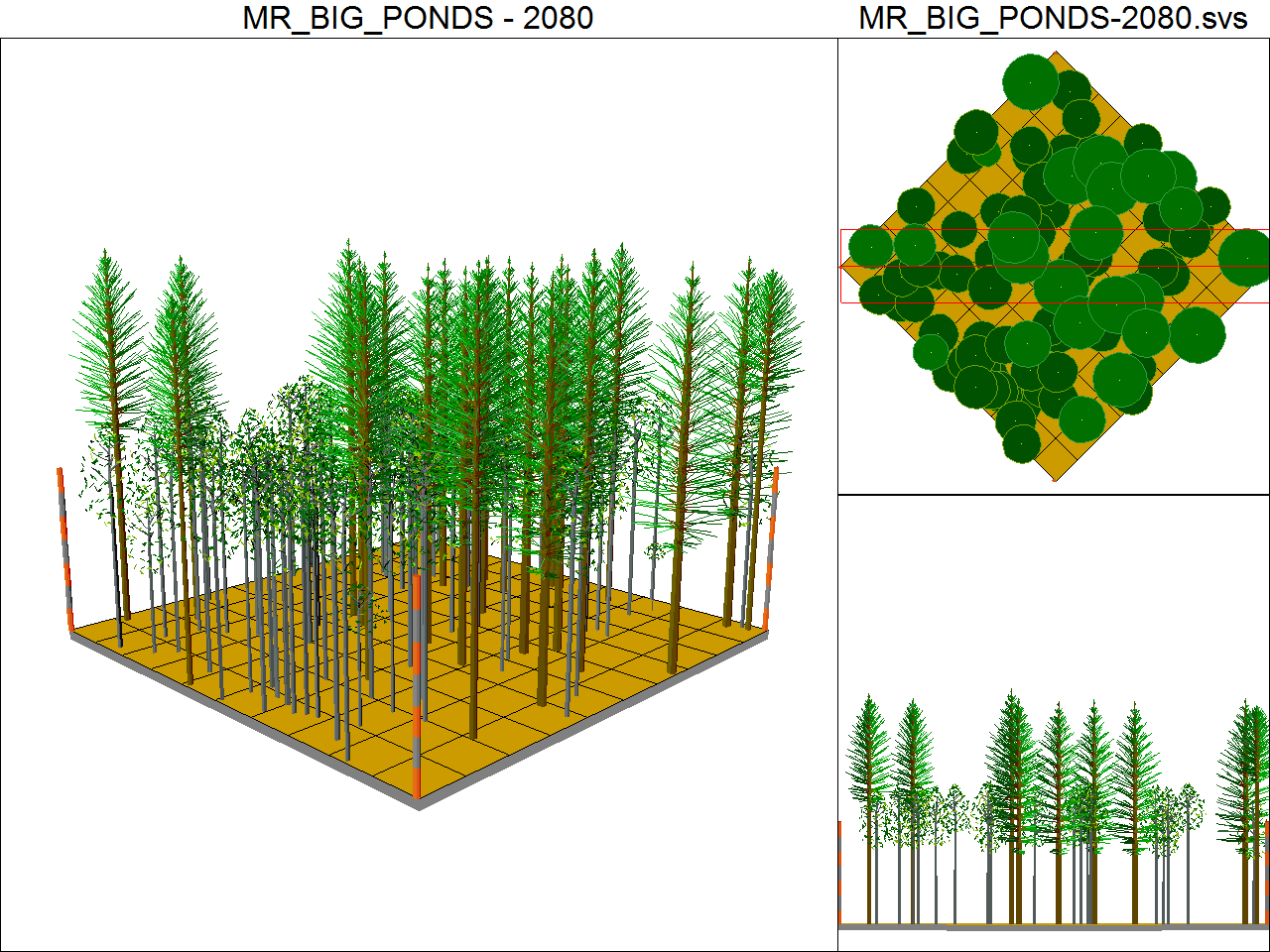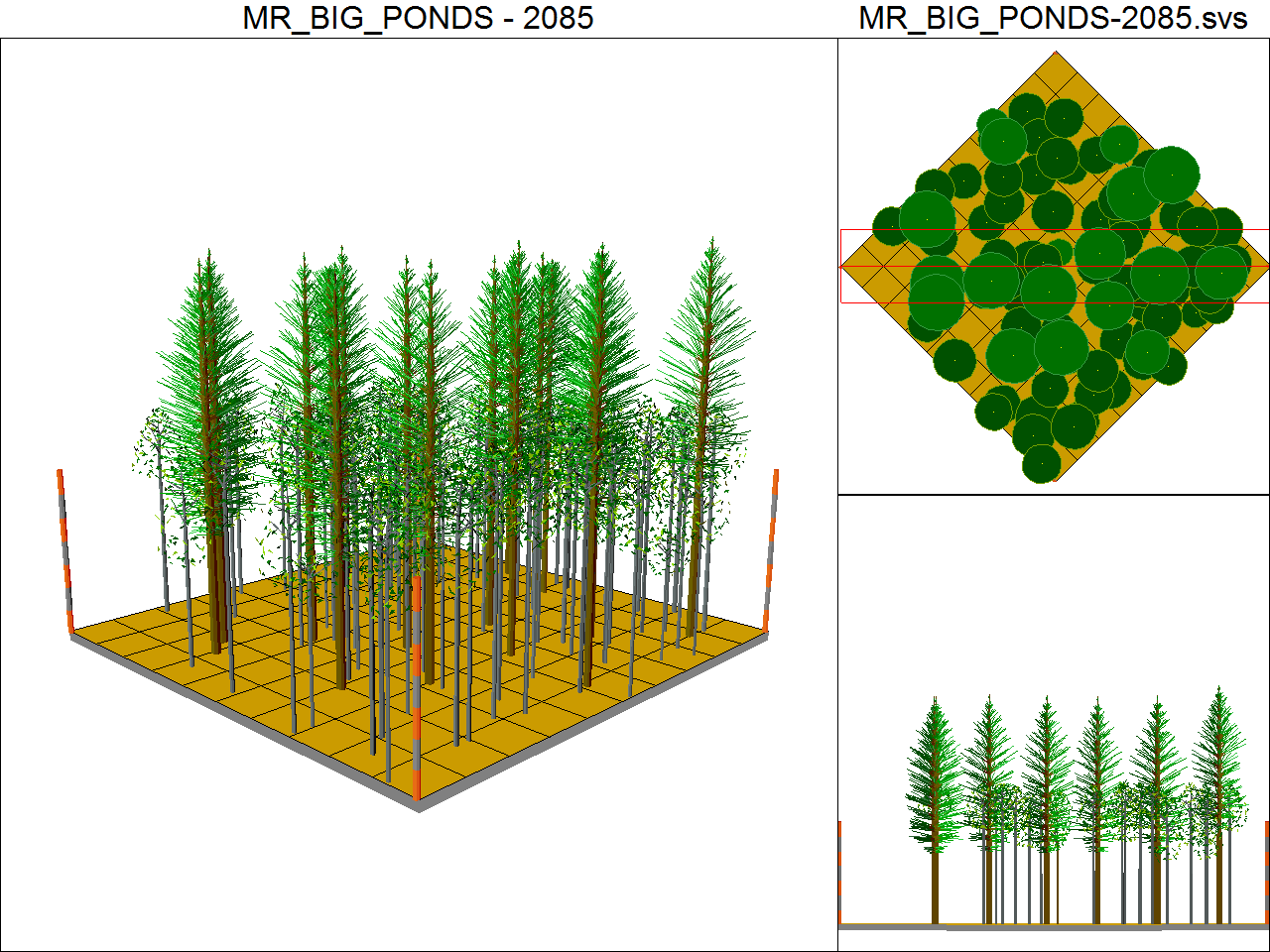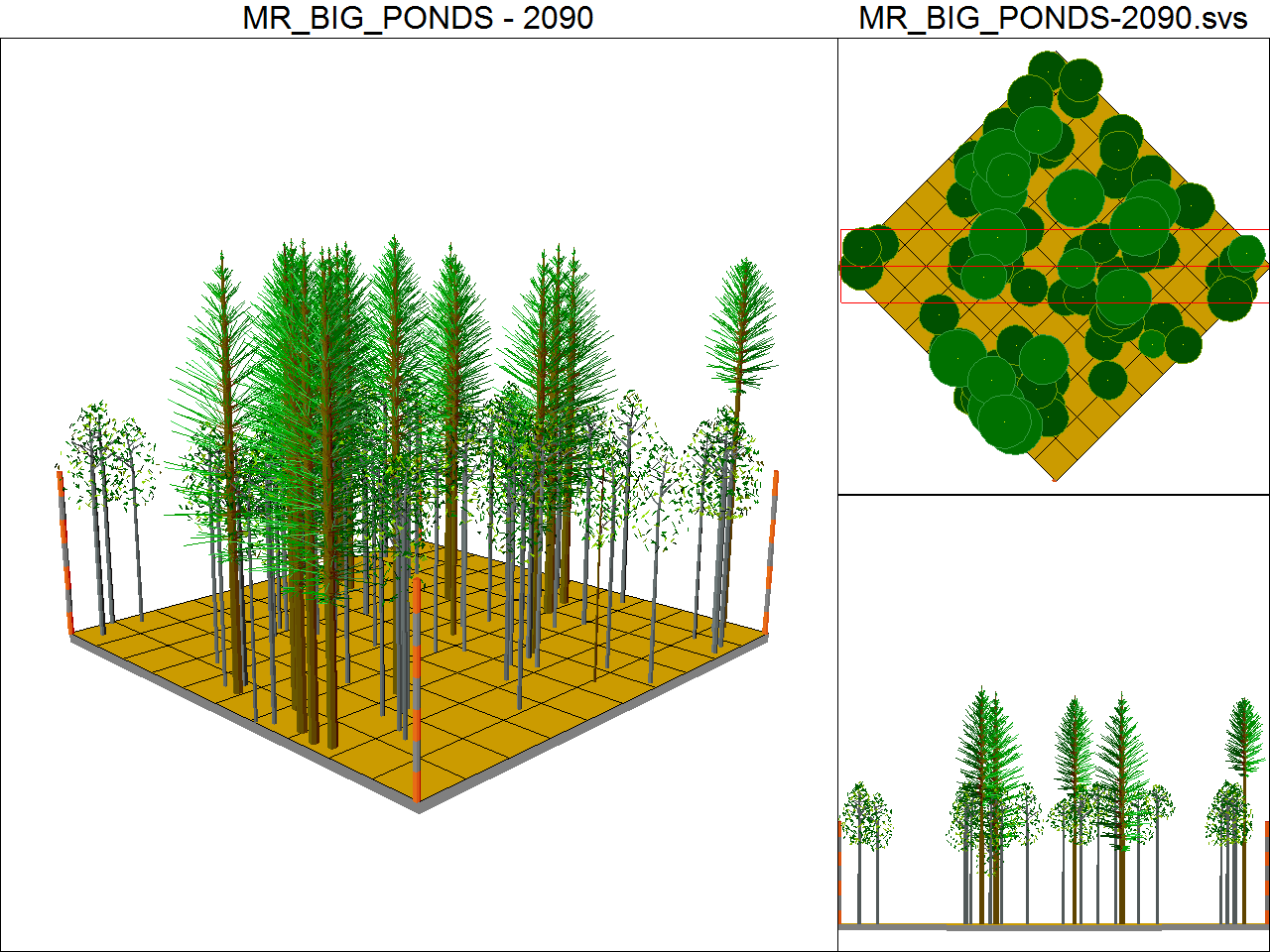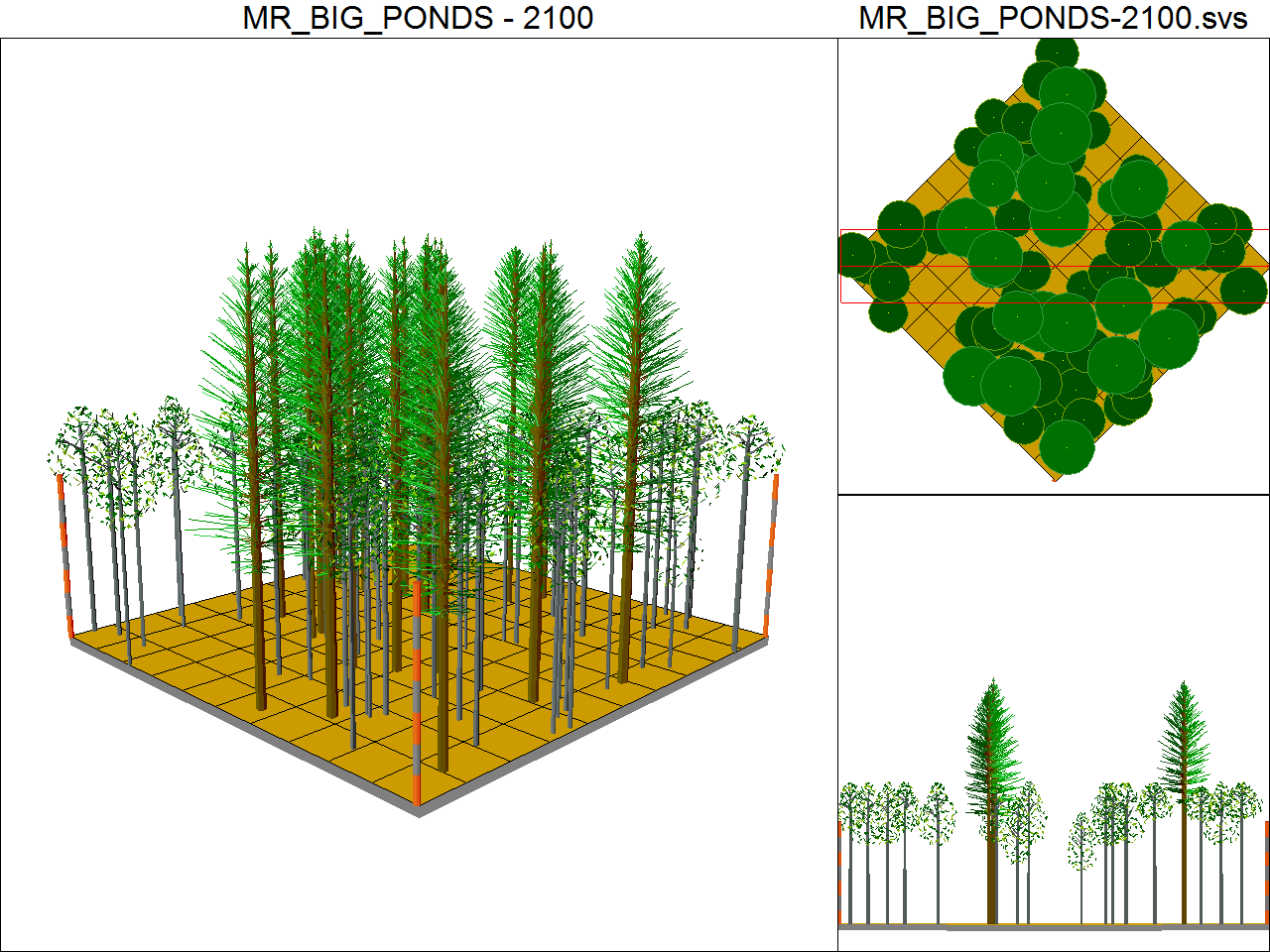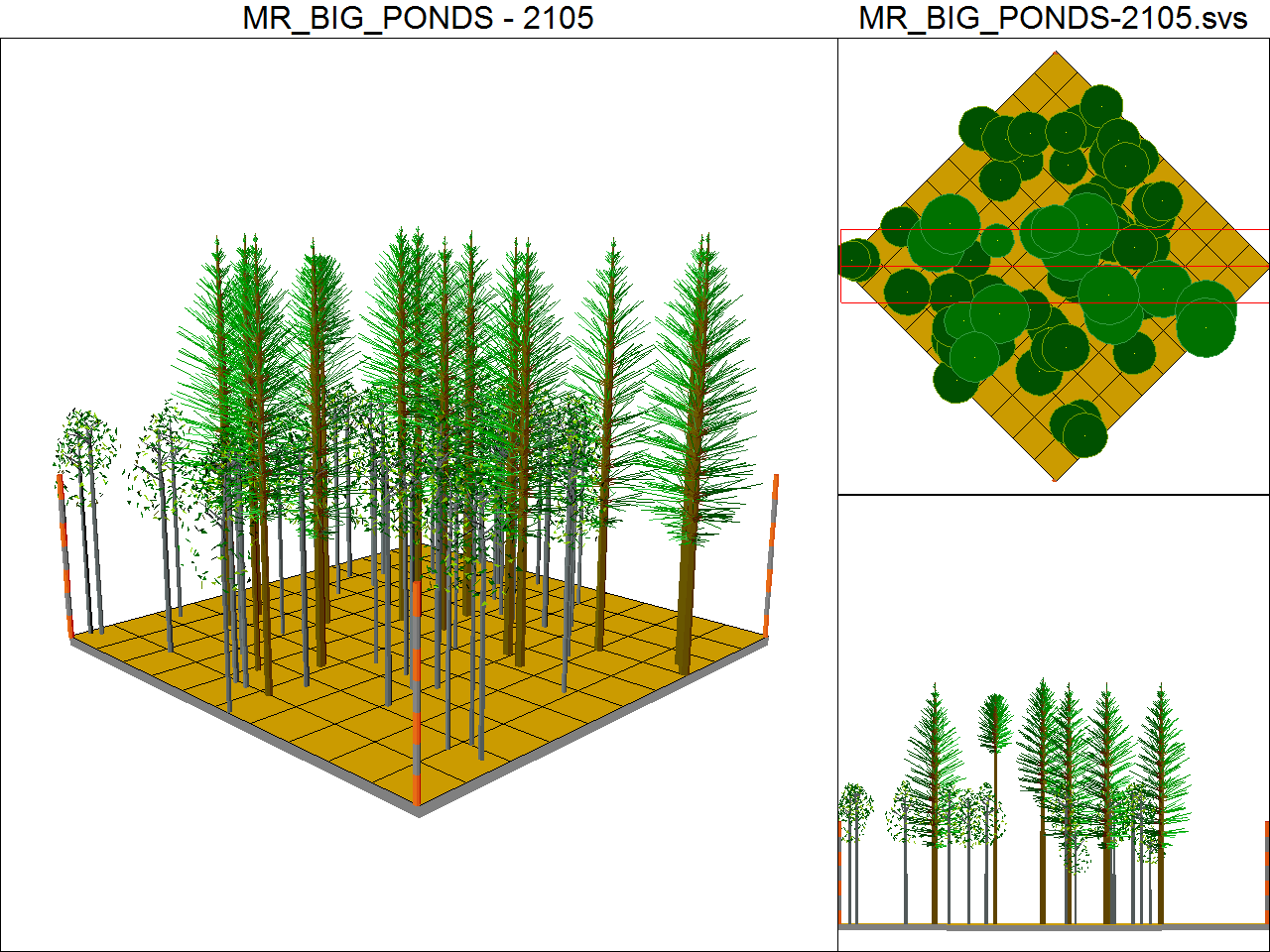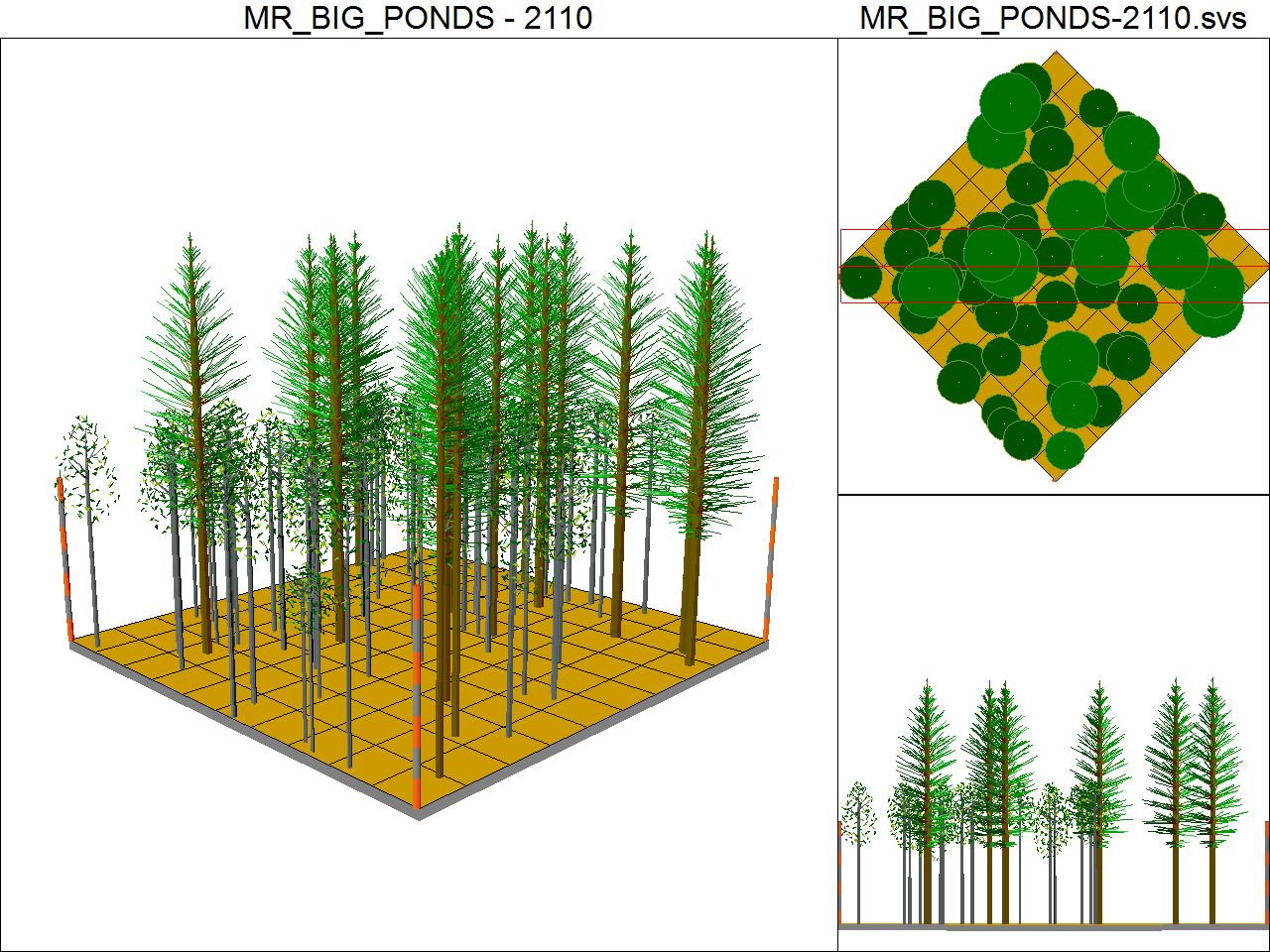Forest Biometrics
Forest Growth & Yield Projections
Biometrics is the scientific backbone of the FRASS Analytics system. Every valuation begins with data that describe individual trees—their diameters, heights, crown ratios, and species identities—measured and modeled through time. These biological measurements define the architecture of the forest and set the stage for how value emerges from living systems.
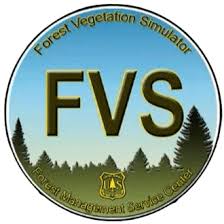
In FRASS, biometric data flow seamlessly from the Forest Vegetation Simulator (FVS) into our Flex Taper Model, where each tree’s shape and volume are reconciled against observed growth. Together, these modules transform tree-level growth data into merchantable log assortments, Scribner volumes, and ultimately delivered-log values through the RPA Forecast Tool.
The U.S. Forest Service developed FVS as the national standard for simulating stand development over time. By harnessing those growth-and-yield projections, FRASS translates biological potential into quantifiable economic outcomes. Each simulated tree is verified against field measurements, ensuring that the physical structure of the forest—stem form, crown position, and taper geometry—remains faithful to reality. These values drive every financial calculation inside FRASS, linking tree physiology directly to appraised value.
The integration of FVS within FRASS means that every cubic foot of projected growth can be tied to species-specific pricing, management schedules, and real market data. Analysts can compare alternative silvicultural regimes, visualize how growth affects delivered log grades, and measure the compound effect of biological growth versus economic decay. This approach gives forestland owners, appraisers, and managers a level of transparency never before achieved in valuation software—scientific credibility joined with economic precision.
Forest biometric modeling has evolved into one of the most powerful tools in modern resource analytics.
Advances in computing and data architecture now allow entire stands to be simulated tree by tree, decade by decade, capturing the biological and economic evolution of a forest through time.
Within the FRASS framework, these growth and yield projections form the living data stream that drives valuation. Each simulated tree retains measurable attributes—diameter, height, crown ratio, taper form, and merchantable volume—that are reconciled with field observations and used to project future assortments by log sort and grade.
The same biometric foundations also support broader natural resource objectives: estimating carbon storage, canopy development, habitat suitability, and long-term sustainability metrics.
Through FRASS Analytics, these biological relationships are not only observed—they are monetized, providing forest managers and investors with defensible, data-driven insights into both ecological function and financial performance.
What’s in your toolbox?
Forest biometric modeling has evolved into one of the most powerful tools in modern resource analytics. Advances in computing and data architecture now allow entire stands to be simulated tree by tree, decade by decade—capturing the biological and economic evolution of a forest through time.
Within the FRASS framework, these growth and yield projections form the living data stream that drives valuation. Each simulated tree retains measurable attributes—diameter, height, crown ratio, taper form, and merchantable volume—reconciled with field observations and used to project future assortments by log sort and grade. The same biometric foundations also support carbon estimation, canopy development, habitat metrics, and long-term sustainability analysis. Through FRASS Analytics, biological relationships are not only observed—they are monetized.
Explore Biometrics in FRASS
Explore More in FRASS Biometrics
Find Biometric Meaning on Your Forestlands
Discover how FRASS translates field-measured tree data into meaningful biometric indicators that reveal the true productive potential of your property.
Flex Taper in FRASS — Using Growth and Yield Data to Drive Valuation
Learn how FRASS uses growth and yield model outputs to calculate defensible, tree-level value rooted in measurable geometry rather than statistical guesswork.
Flex Taper (Patent Pending) — From δ-Based Geometry to Log-Level Value
Explore how the δ-based Flex Taper method refines each tree’s geometric profile to reconcile FVS cubic-foot volume with log-level merchantability and grade.
Flex Taper Model — Bridging Biometrics, Taper, and Delivered-Log Valuation in Practice
See how Flex Taper integrates biometric modeling and regional log rules to create consistent, transparent, and auditable forest valuation outcomes.
FRASS Coverage Across North America — FVS Variants, Markets, and RPA
View the FVS variant map and see how FRASS expands from Florida to Alaska and into western Canada, uniting growth modeling, market pricing, and Real Price Appreciation.





